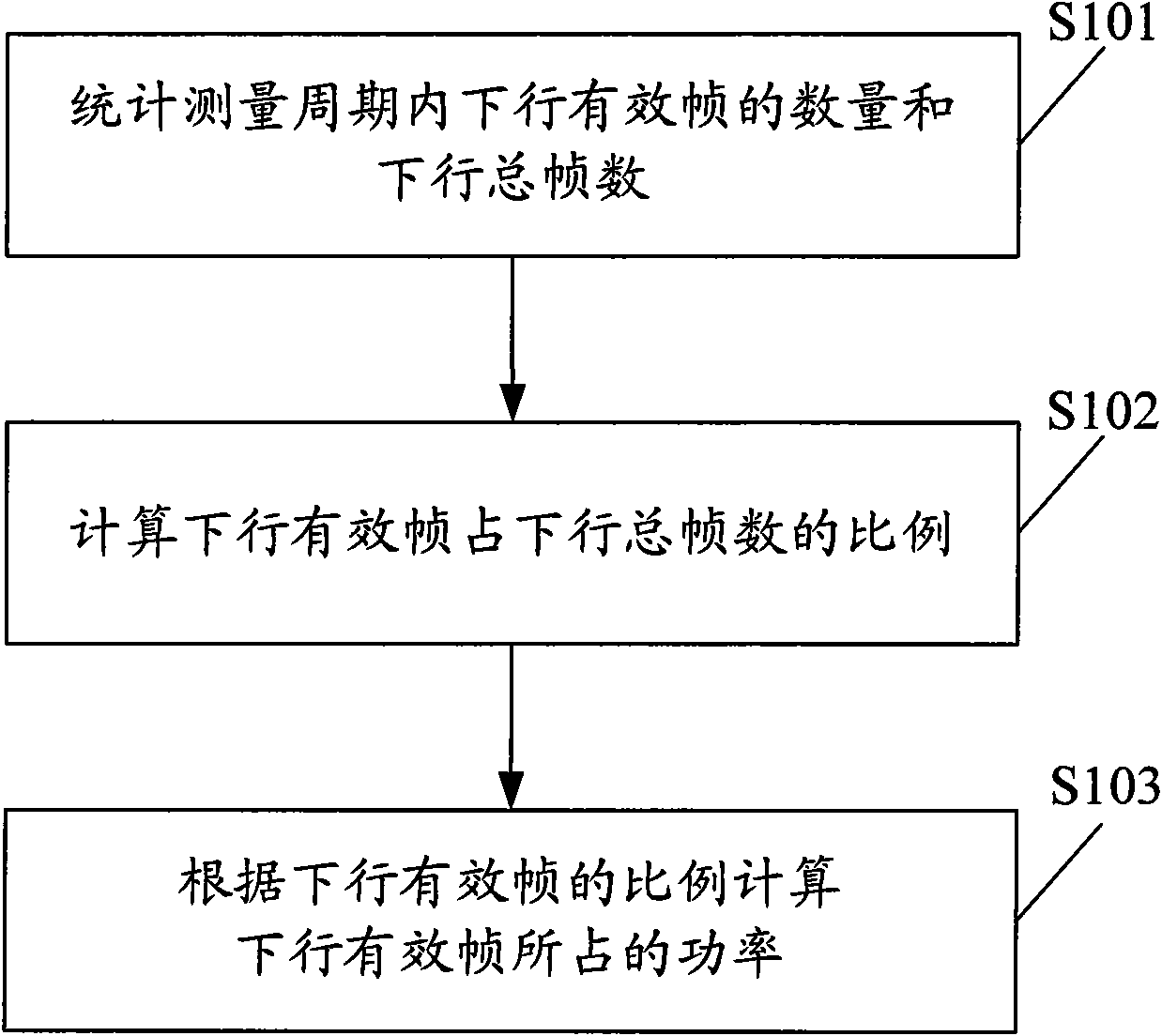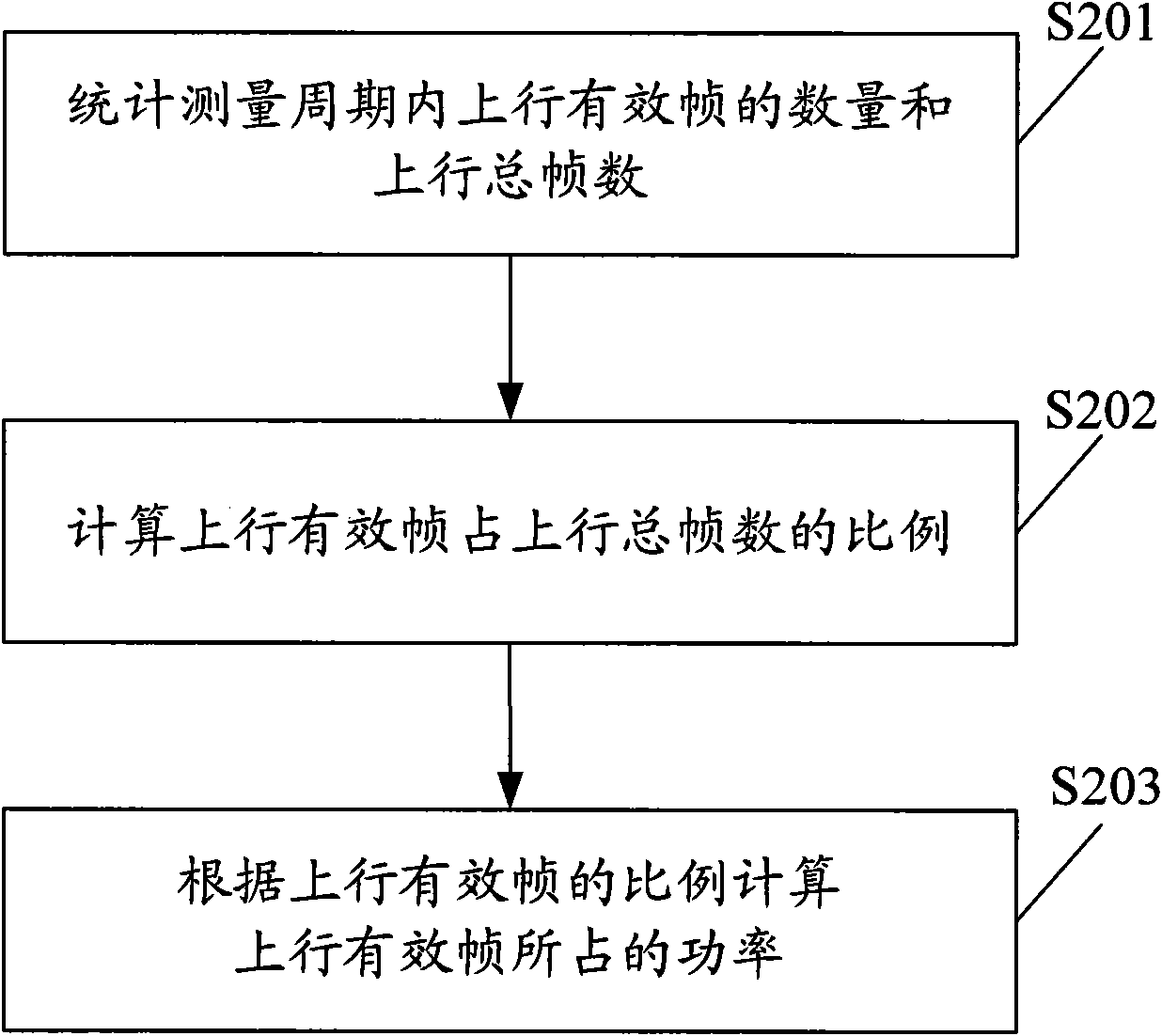Power detection methods based on discontinuous transmission and base station
A power detection and discontinuous technology, applied in the field of communication, can solve the problems of complicated third-party detection instruments, high price, and increase the cost of networking, and achieve the effect of convenient power detection and cost reduction.
- Summary
- Abstract
- Description
- Claims
- Application Information
AI Technical Summary
Problems solved by technology
Method used
Image
Examples
Embodiment Construction
[0031] The discontinuous transmission-based power detection method and the base station provided in the embodiments of the present invention will be described in detail below with reference to the accompanying drawings.
[0032] Embodiments of the present invention firstly provide a DTX-based power detection method, such as figure 1 shown, including:
[0033] Step S101, counting the number of valid downlink frames and the total number of downlink frames within the measurement period.
[0034] In the case of enabling DTX, the effective downlink frames include any one or any combination of downlink voice frames and silent frames (SID frames) used to avoid problems caused by the user terminal receiving idle frames for a long time. However, the idle frame does not need to turn on the power amplifier during the sending process, and is an invalid frame. Among them, the silent frame, the speech frame and the idle frame can only be sent (or received) after being modulated (or demodu...
PUM
 Login to View More
Login to View More Abstract
Description
Claims
Application Information
 Login to View More
Login to View More - Generate Ideas
- Intellectual Property
- Life Sciences
- Materials
- Tech Scout
- Unparalleled Data Quality
- Higher Quality Content
- 60% Fewer Hallucinations
Browse by: Latest US Patents, China's latest patents, Technical Efficacy Thesaurus, Application Domain, Technology Topic, Popular Technical Reports.
© 2025 PatSnap. All rights reserved.Legal|Privacy policy|Modern Slavery Act Transparency Statement|Sitemap|About US| Contact US: help@patsnap.com



